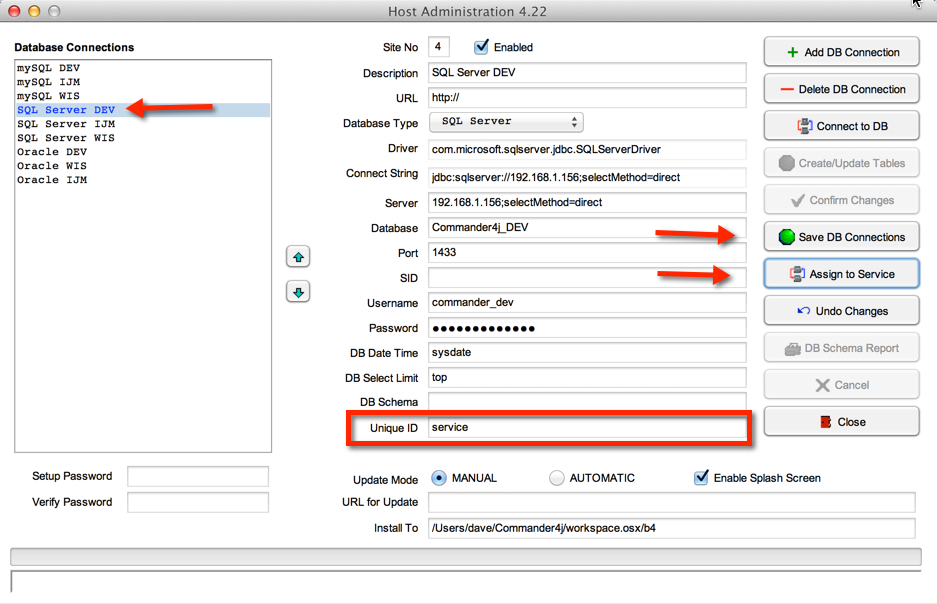Difference between revisions of "Commander4j Interface Services Install"
| Line 20: | Line 20: | ||
The above screen shows a config with multiple databases defined. As mentioned previously, in a situation like this you can only assign the service to manage one of these, so it might be better to install the application multiple times. However in this case I have selected the database that i want to configure for use with the service by selecting it, clicking on the assign button and then saving the config. You will notice that a field marked "Unique ID" is now populated with the word "service". This allows the service application to identify which database to connect to where there are more than one. | The above screen shows a config with multiple databases defined. As mentioned previously, in a situation like this you can only assign the service to manage one of these, so it might be better to install the application multiple times. However in this case I have selected the database that i want to configure for use with the service by selecting it, clicking on the assign button and then saving the config. You will notice that a field marked "Unique ID" is now populated with the word "service". This allows the service application to identify which database to connect to where there are more than one. | ||
| + | |||
| + | '''Installation''' | ||
Revision as of 09:21, 27 March 2014
From version 4.21 the process for creating a Service for interfacing has become much easier to setup. If you have a prior version of Commander4j and you have already created a service you should use the "uninstall service" shortcut to remove it and then follow the instructions below to create a new service.
Assumptions
Although you can connect to more that one database with a single install of C4J, only one of those databases can be managed by a single service. If you want to operate more than one database on a single server it is recommended that you install the application into a unique folder for each database. For example you could use the following structure.
Service for Database 1 (Company 1)
C:\MyApps\Company1\Commander4j
Service for Database 2 (Company 2)
C:\MyApps\Company2\Commander4j
The physical database can reside anywhere on the network, you don't need to have the C4J Application/Service installed on the database server.
Configuration
The above screen shows a config with multiple databases defined. As mentioned previously, in a situation like this you can only assign the service to manage one of these, so it might be better to install the application multiple times. However in this case I have selected the database that i want to configure for use with the service by selecting it, clicking on the assign button and then saving the config. You will notice that a field marked "Unique ID" is now populated with the word "service". This allows the service application to identify which database to connect to where there are more than one.
Installation
